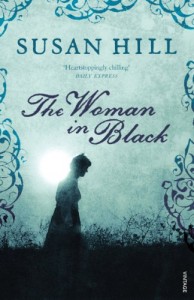Carpe Librum: ‘The Woman in Black’

Have you ever had the feeling you’re being watched? What about the creeping sensation that you’re not as alone as you should be?
I’m guessing you have.
But have you ever known the intense terror of being stuck in an isolated, run-down house in the middle of a marsh where no one can reach you until morning, when the small dog who is your only companion begins barking furiously at an unknown entity on the other side of your closed door in the middle of the night?
Yeah, neither have I (thank Heavens), but this is exactly the kind of experience which awaits Arthur Kipps in Susan Hill’s novel, “The Woman in Black.”
The book is set in 1800s England, and revolves around the story of Kipps, a young and ambitious lawyer.
Kipps is sent by his employer to the small town of Crythin Gifford, on the marshy eastern coast, to settle the affairs of a Mrs. Drablow.
Drablow had been a reclusive widow and the … supposed … sole inhabitant of the desolate Eel Marsh House in her final years. The house itself is remarkable, stationed in the middle of wetlands that allow access to the home only at low tide. At high tide, the house is completely cut off from the mainland.
It is in this home that, despite the best efforts of the evasive townspeople, Kipps decides it would most benefit him to stay while he sorts through papers and settles the affairs of the deceased.
In the course of the next few days, Kipps suffers a terrifying series of nighttime events. He sees a mysterious woman in black mourning clothes wandering a graveyard. Even worse, he hears the screams of a dying pony … followed by the choking cries of a young boy and his maid drowning in the marshes.
When he finally does return to town, the polite but vague people remain reluctant to answer Kipps’ questions about Drablow and this mysterious Woman in Black, leaving the protagonist to find answers for himself.
He will find answers—answers that will haunt him for the rest of his life.
Will they have the same affect on you? Well, there’s only one way to find out, and that way is no chore. This book is fantastic. It’s short, but that’s good because you may not want to be reading it too far into the night.
The storyline is simple—very Victorian horror story—but there’s a mystery there that makes it seem more complex. You know all along the Woman in Black is a ghost, but why she haunts Eel Marsh House and Crythin Gifford remains an inscrutable question until the end. As an observer, you know no more than Kipps does, and the result is chill worthy, at the very least. (It’s kind of like waiting for the end of the ghost story you’re listening to around the campfire. You know your big brother’s hiding in the bushes to jump out, but you still scream.)
I read “The Woman in Black” in anticipation of the movie version, starring Daniel Radcliffw and coming out in February, and was not disappointed. In fact, I hope the movie lives up to the book.
It’s a novel I would recommend to anyone: the violence and blood present in so many books and movies today is refreshingly absent.
At the same time, it still succeeds in giving you the feeling you should check under your bed tonight—just in case.

